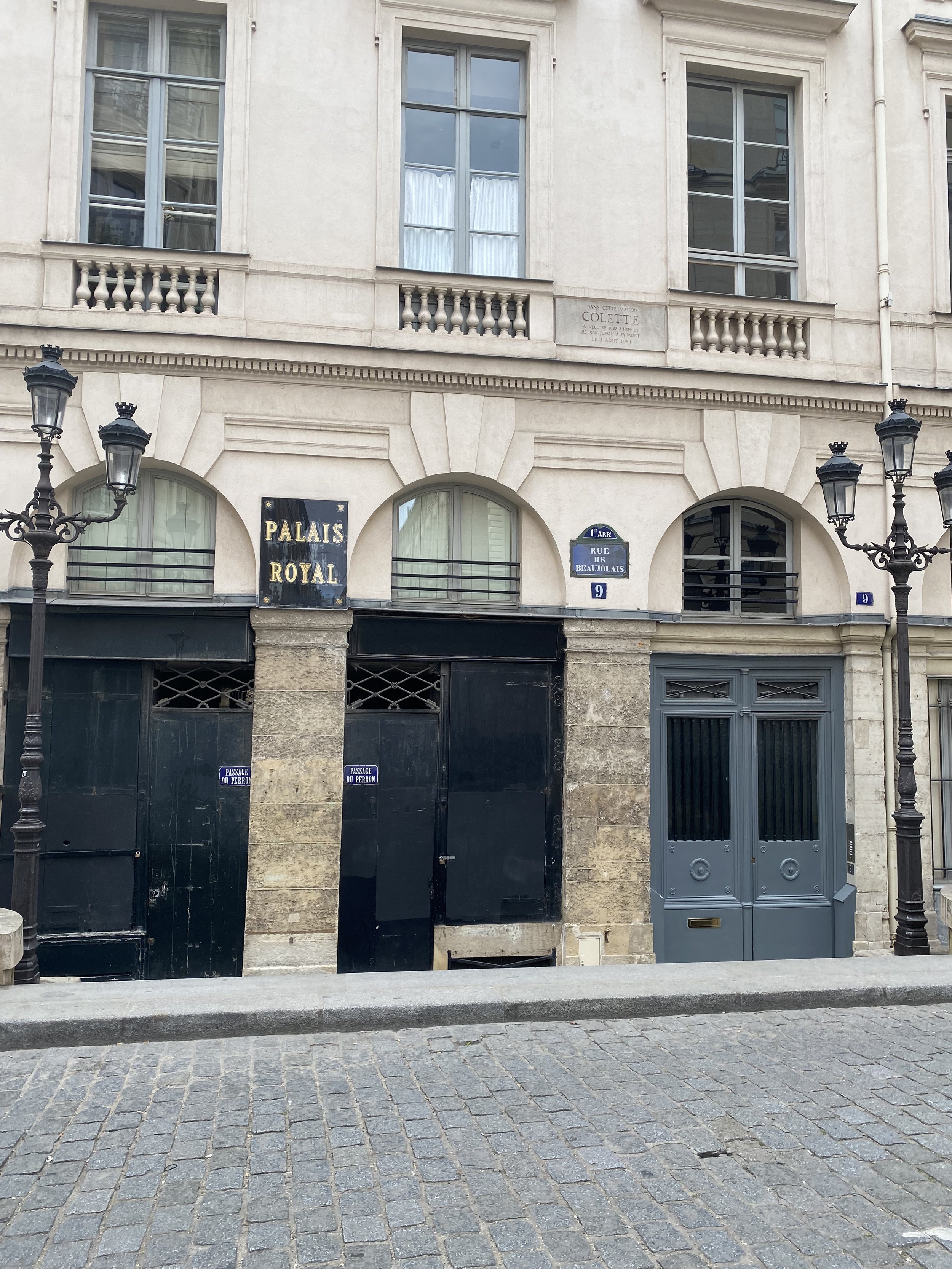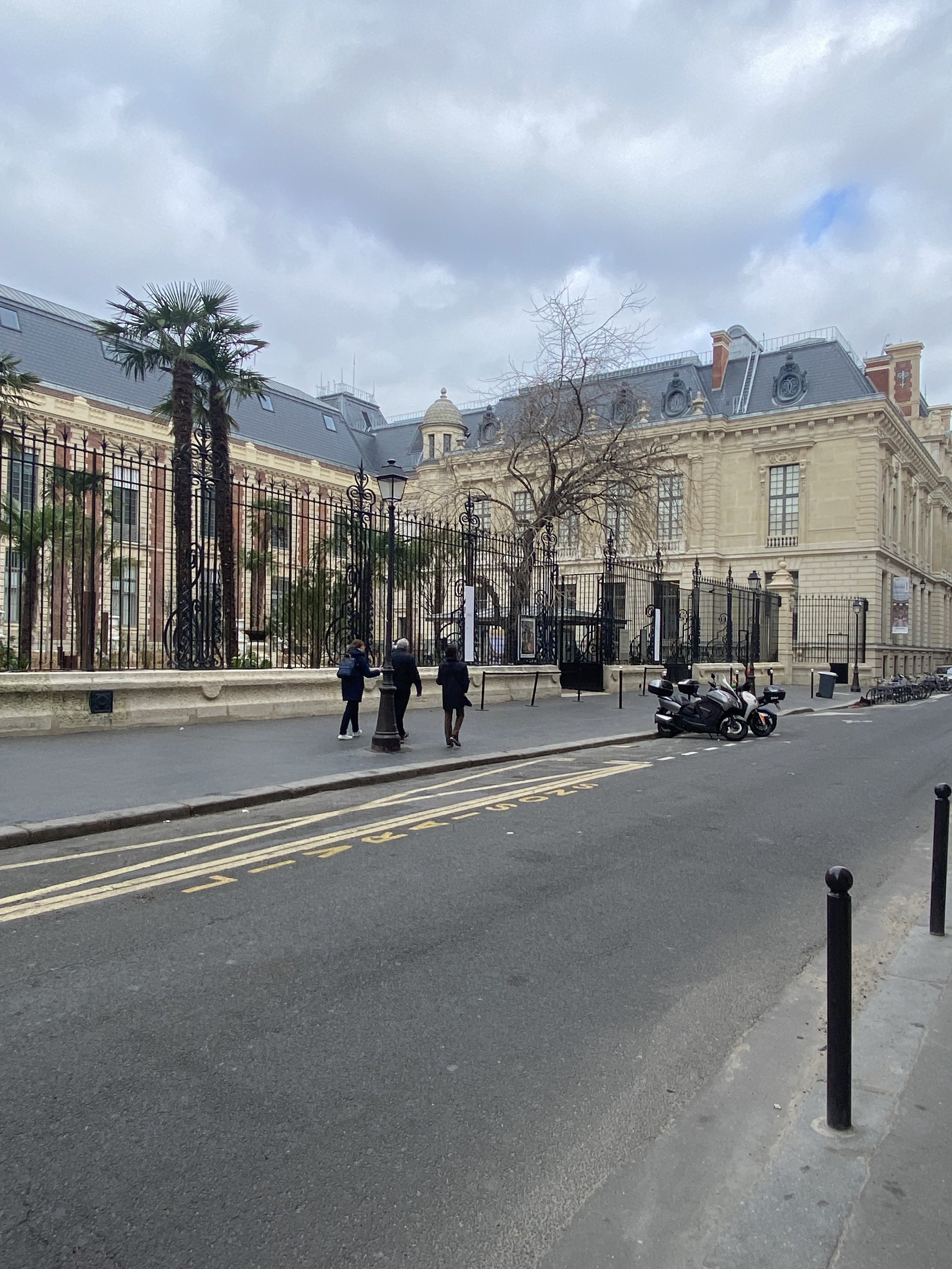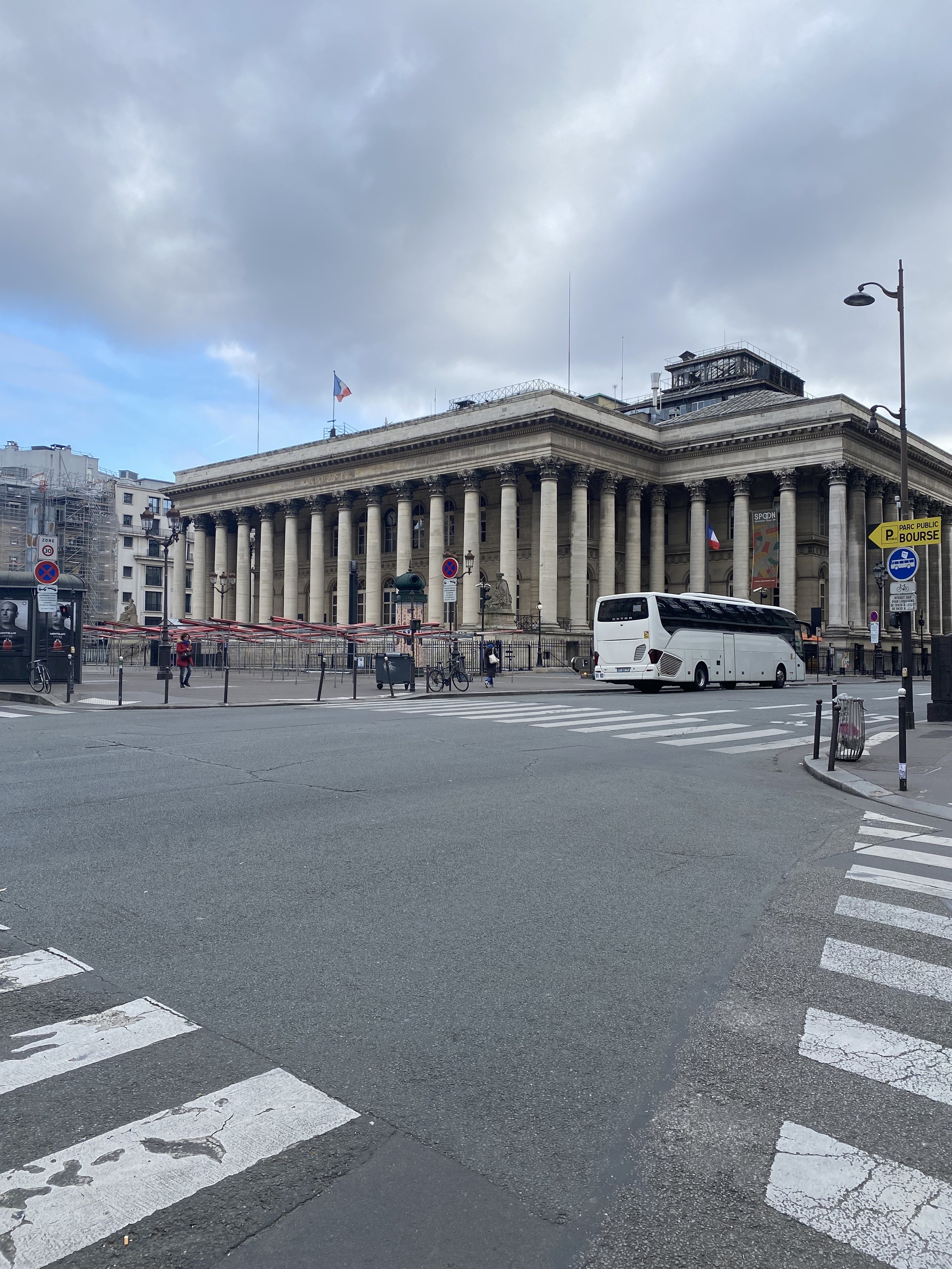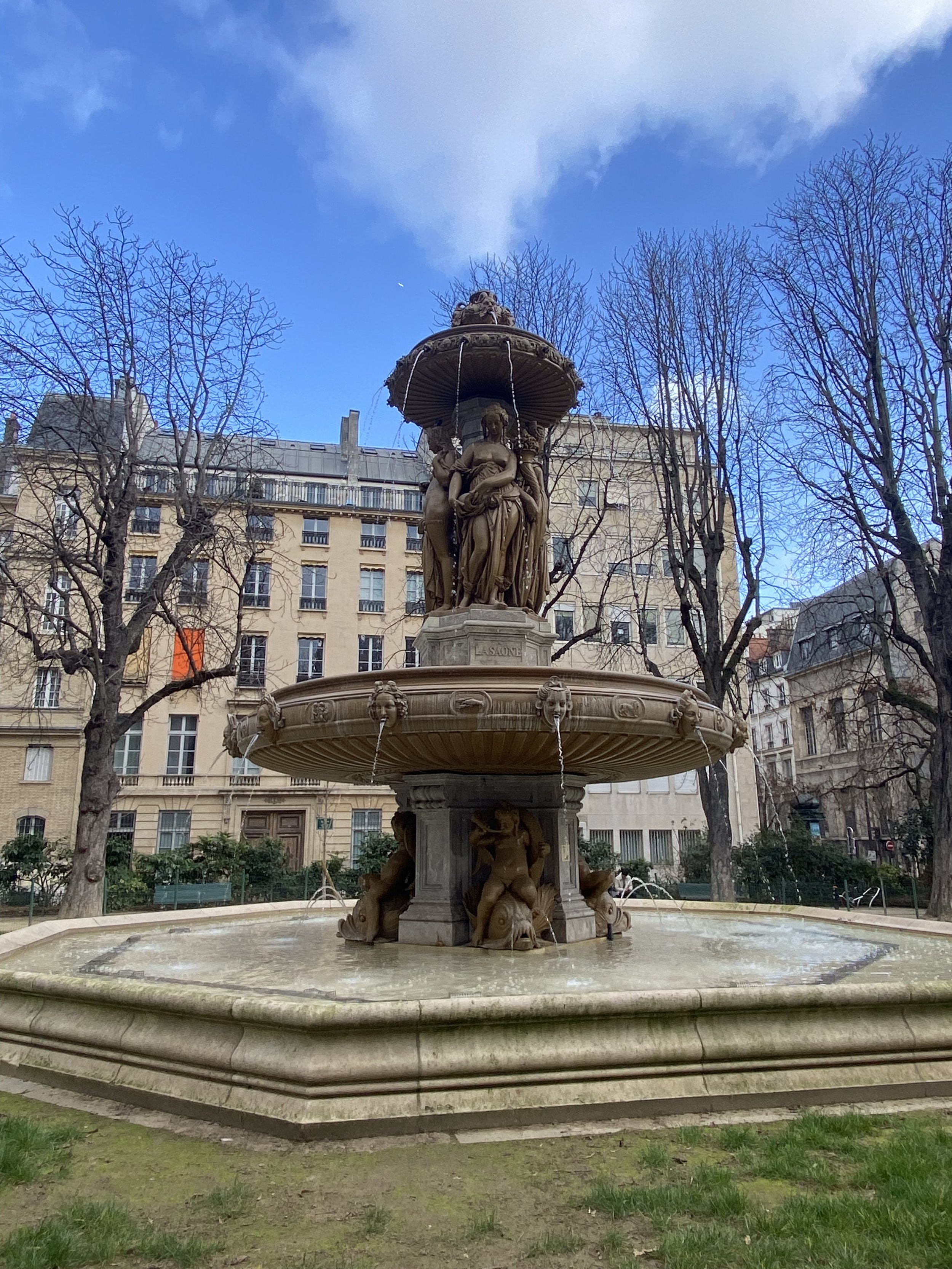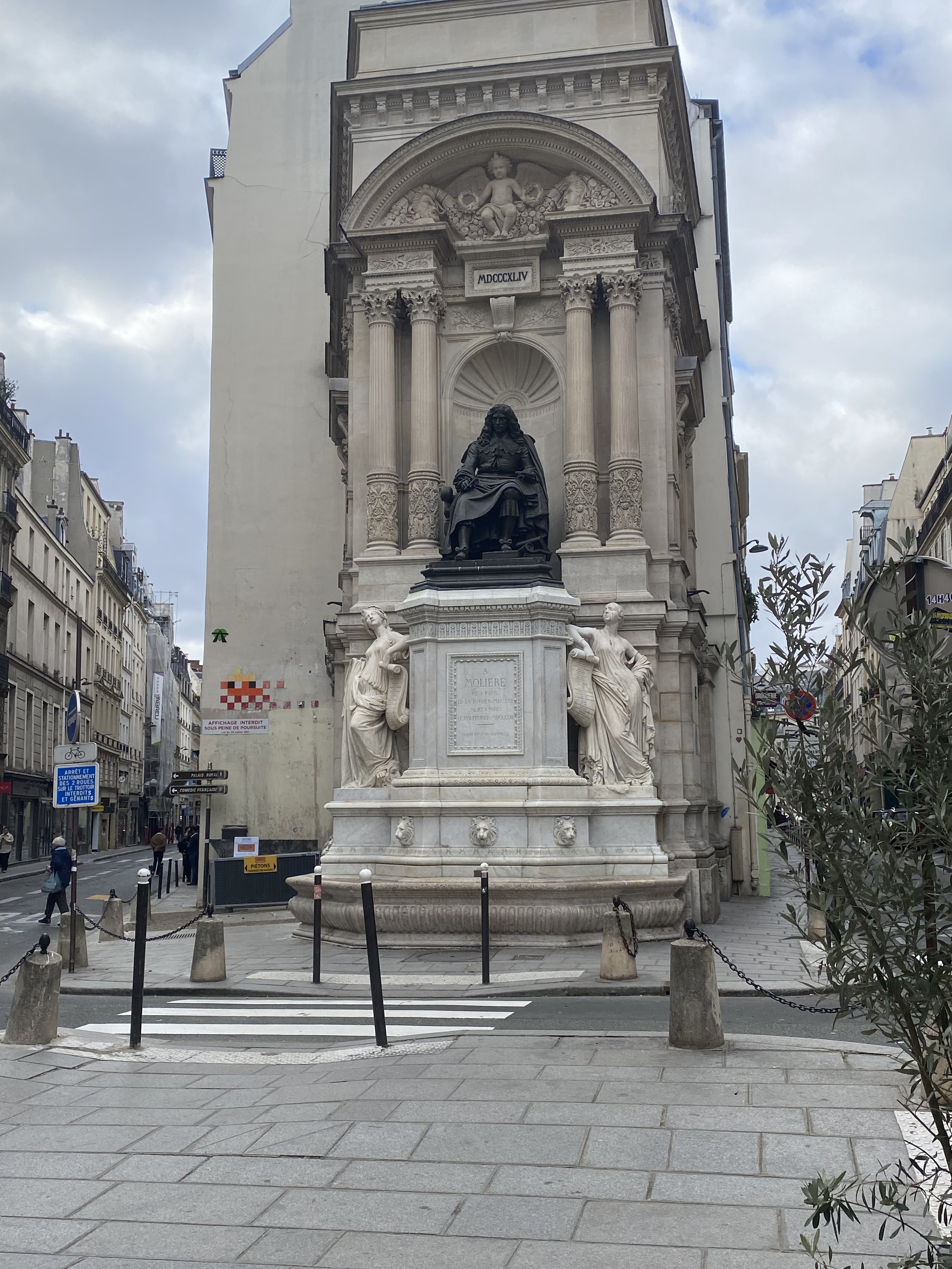Live from Paris
The Cardinals, Playwright, and an English King
February 19, 2023
Missed it live, watch it now HERE
Today’s walk started on the northern side of the Palais Royal on Rue de Beaujolais, named for the count, not the wine. The son of Louis-Philippe d’Orleans and in the line of Louis XIV and Madame de Montespan. The two had seven children that were later legitimized. Check out the podcast next week for a bit more on Montespan and her role in the Poisson Affair, but you can also hear her life story in a past episode.
At no 5 from 1949 to 1965 was the Milord l’Arsouille club that first saw Serge Gainsbourg on stage and later was a song Edith Piaf covered.
No 9 Colette lived until her death and was often seen being carried down to the Grand Vefour for dinner.
No 15 Jean Cocteau lived and was often seen in the garden with Edith.
For Napoleon fans check out the official Napoleon store at number 10
Right on Rue Vivienne and a short quick left onto rue des Petits Champs is Willi’s Wine Bar, a favorite restaurant that is always fantastic and check out their large collection of posters created each year. The first-of-its-kind wine bar that served food opened in 1980 and still going strong.
The rue Vivien was named for Louis Vivien mayor of Paris in 1599 and the family that owned the portion of land to the east of the Bibliotheque Nationale. Rue Viviene was the first roman road that went through Paris to Saint-Denis and would have seen the king venturing past from the Palais du Louvre.
To the left on Rue Viviene was the home of Cardinal Mazarin and just a bit farther Jean-Baptiste Colbert also lived. The original Palais Royal was built by Cardinal Richelieu so the entire area was filled with powerful men steps away from Louis XIII and XIV in the Louvre. Mazarin built the large palace in 1635 to hold his art and books that went to Louis XIV after his death. His book collection is just over the Seine in the Institut de France. In 1721 the building was turned into the national collection of books and other treasures in the French state. The museum just reopened this last fall after more than 7 years and is fantastic to see.
At the end of the BNF building is a plaque for Edouard-Léon Scott de Martinville who died April 26, 1879 and invented the typographer and invented the first machine that could record sound 17 years before Edison. His bookshop and home were once on this corner.
At no 17 Jean-Baptiste Le Moyne de Bienville was the founder of New Orleans Louisianna and died here on March 7, 1767,
At the intersection of Vivien and Rue de Quatre-Septembre is the former stock exchange, the Borse which was built in 1808 under Napoleon by Alexandre-Theodore Brongniart. Prior to this, the stock exchange moved around to multiple locations including 7 months from May 10 to December 13, 1795, in the Palais du Louvre. The stock exchange lasted from November 6, 1826, to November 6 1998, before it moved to just one European location in Belgium. Now it is a rental event space for tradeshows and weddings.
Just off the side street is a rare example of Revolutionary construction. The Rue des Colonnes was built in 1792 on what was a private road. The 36 doric columns were inspired by the temple of Poseidonia in Greece. In 1826 the Rue de la Bourse cut through and one of the buildings was rebuilt in 1996 but the columns were saved.
After the Rue de Quatre-Septembre named after the start of the third republic on September 4, 1870, take a left on the Rue de Gramont.
In 1779 Marin Kreenfelt de Storcks was working on the Almanac of Paris and was frustrated that he couldn’t give a more pinpointed idea of location. At first, he counted street lamps to note an address. When that didn’t work under the dark of night he went out and painted numbers on doors. On Rue de Gramont in the 2e he started on the left side, 1, 2, etc, and then came back around so the 1 was straight across from the last number on the street
Gramont changes into Rue Sainte Anne named not for the Sainte and mother of the Virgin Mary but for Anne of Austria, mother of Louis XIV. The best Asian restaurants in Paris are found on this street and where I stayed on my first trip in 2016.
Left on Rue de Louvois was named for Francois Michel de Tellier de Louvois minister under Louis XIV who opposed Colbert on many things including how the Affair of the Poisons was handled.
The square also holds the same name, the Square Louvois which is where the Richelieu opera house once stood from 1794. In 1820 it was the sight of the stabbing and death of the Duc de Berry, son of Charles X who had the opera house destroyed following his beloved son’s death. In 1830 Louis-Philippe commissioned Louis Visconti to create a fountain for the square. Built-in 1844 it represents the four major rivers of France. The Seine, Garonne, Loire, and Saone with each of its own allegory standing over the signs of the zodiac.
Just around the corner at number 12 rue Chabannais was the Chabannais brothel that was open from 1878 to 1946. Madame Kelly, and Alexandre Joannet ruled the street and decorated each room with a different theme. Japanese, Hindu, Louis XV, and Pompeii as well as the large custom copper tub created for Edward VII of England, known in Paris as Dirty Bertie. Bertie even had a custom chair created when he became a bit too large to maneuver relations shall we say.
The Rue de Richelieu was of course named for the Cardinal, the arch-nemesis of Marie de Medici and who controlled the court of Louis XIII. The street runs to the Louvre and has seen no 92 the first bakery opened by August Zang serving croissants.
No 56 on the corner of Richelieu and Petite Champs is the oldest building that dates back to 1655.
At no 50 a young Madame de Pompadour and future love of Louis XV grew up and just down the street at no 40, Moliere died 350 years ago on February 17. 1673. The building that stands dates to 1769 but a plaque marks the spot where the great playwright lived in his final years.
Steps away in the Place Mireille is the newly restored Fountain of Moliere. Also designed by Louis Visconti he instructed artist Bernard-Gabriel Seurre for the bronze Moliere in his signature chair that he sat in on stage in the Comedie Francais. Below are two allegories of La Comedie Serieuse and La Comedie Légère by Jean-Jacques Pradier. Each of the parchments has the full list of the great playwright’s writings.
At no 26 was the home of Rose Bertin, the first major designer that called Marie Antoinette her number one client. Under MA she even had the first fashion magazine and store just a few steps away in the Passage Potier.
Click on any of the links to learn more about many of these great women we have covered on the podcast.


